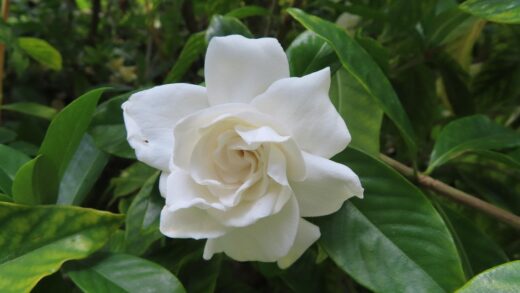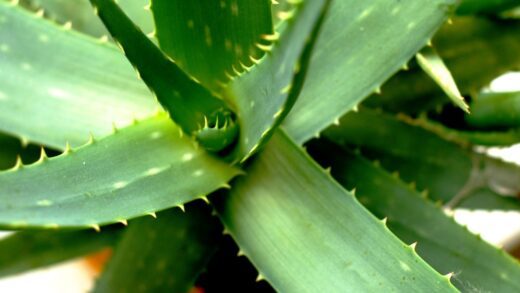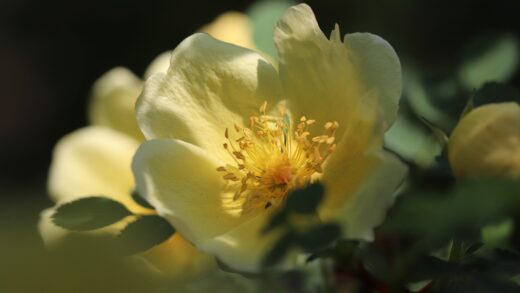Understanding the water requirements and implementing proper irrigation techniques for the Golden Rain Tree is fundamental to its health, especially as it navigates the transition from a newly planted tree to a mature, self-sufficient specimen. This species is renowned for its impressive drought tolerance once established, a trait derived from its native habitats which are often characterized by hot, dry summers. However, this resilience can be misleading for the novice gardener, as the tree has distinct and critical water needs during its formative years. A well-executed watering strategy ensures the development of a deep, extensive root system, which is the very foundation of its future hardiness and ability to withstand periods of low rainfall. Mastering the balance between providing sufficient moisture for establishment and encouraging drought-resistant characteristics is the key to cultivating a thriving Golden Rain Tree.
The physiology of the Golden Rain Tree is adapted to conserve water and survive in challenging conditions. Its deep taproot and extensive network of feeder roots allow it to access moisture from lower soil profiles, long after the surface soil has dried out. The pinnately compound leaves, composed of many small leaflets, offer a smaller surface area for transpiration compared to larger, single leaves, which helps to reduce water loss on hot, windy days. These natural adaptations are what make a mature Golden Rain Tree an excellent choice for xeriscaping and water-wise gardens. However, these mechanisms take time to develop fully.
The life stage of the tree is the primary determinant of its water needs. A seedling or a newly transplanted tree has a limited, confined root system and is entirely dependent on the gardener for its water supply until its roots can grow and expand into the surrounding soil. During this establishment phase, which can last from one to three years, the tree is highly vulnerable to drying out. In stark contrast, a mature, well-established tree with a root system that extends far beyond its canopy’s dripline often requires no supplemental irrigation at all, except in the most severe and prolonged droughts.
The environmental context, including climate, soil type, and recent weather patterns, also plays a significant role in dictating the tree’s irrigation needs. A Golden Rain Tree planted in a hot, arid climate with sandy, fast-draining soil will require more frequent watering than one planted in a temperate climate with heavier loam or clay soil that retains moisture for longer periods. Therefore, a successful irrigation plan is not a rigid schedule but rather a responsive and adaptive approach based on careful observation of the tree, the soil, and the prevailing weather conditions.
Understanding the tree’s natural water tolerance
The exceptional drought tolerance of a mature Golden Rain Tree is one of its most valuable horticultural assets. This resilience is not accidental but is a direct result of adaptations developed in its native range across China and Korea. These regions often experience monsoonal rainfall patterns with periods of intense summer heat and dryness. To survive, the tree evolved a deep and robust root system capable of seeking out water reserves far below the soil surface, a characteristic that serves it well in a landscape setting. Once this root system is fully developed, the tree can endure weeks or even months of dry weather with little to no visible stress.
More articles on this topic
This natural hardiness makes the Golden Rain Tree an ideal candidate for low-maintenance and environmentally conscious landscaping. It aligns perfectly with the principles of xeriscaping, a gardening philosophy focused on selecting plants that require minimal irrigation. In many temperate climates, a mature specimen can thrive solely on natural rainfall, reducing the homeowner’s reliance on municipal water supplies and contributing to water conservation efforts. This makes it a responsible choice for public parks, urban streetscapes, and residential gardens where water efficiency is a growing concern.
Despite its toughness, it is important to recognize the signs of extreme drought stress, even in a mature tree. While it may survive, prolonged water deprivation can impact its health and aesthetic appeal. Symptoms of severe stress include wilting or drooping leaves that do not recover in the evening, scorching or browning along the leaf margins, premature yellowing and dropping of leaves, and a sparse or thinning canopy. In very rare and extreme cases, it could also lead to branch dieback. Observing these signs indicates that even this drought-tolerant champion would benefit from a deep, occasional soaking.
It is also crucial to understand that “drought-tolerant” does not mean the tree prefers dry conditions; it simply means it can survive them. A Golden Rain Tree will exhibit its most vigorous growth, lushest foliage, and most spectacular flower display when it has access to adequate, consistent moisture, especially during its key growth and flowering periods. The goal of a good water management plan is not to push the tree to the limits of its tolerance but to provide the optimal amount of water to keep it healthy and beautiful while still taking advantage of its natural water-wise characteristics.
Irrigation during the establishment phase
The period immediately following planting is the most critical time for water management. During this establishment phase, typically the first two to three growing seasons, the young Golden Rain Tree is working to extend its roots from the original root ball into the surrounding landscape soil. Until this connection is made, the tree is essentially living in the small volume of soil it was grown in, which can dry out very quickly. Therefore, providing consistent and deep irrigation during this time is non-negotiable for the tree’s survival and future vigor. A failure to do so is the most common reason for the failure of newly planted trees.
More articles on this topic
For a newly planted tree, a thorough watering schedule should be implemented immediately. After the initial soaking at planting time, the tree should be watered deeply every two to three days for the first few weeks. After this initial period, the frequency can be gradually reduced to once a week for the remainder of the first growing season, depending on rainfall and temperature. The key is to deliver the water slowly, allowing it to penetrate deeply into the soil rather than running off the surface. A soaker hose spiraled over the root ball or simply letting a regular hose trickle at the base of the tree are excellent methods.
The amount of water provided during each irrigation session is just as important as the frequency. A light sprinkling that only wets the top few centimeters of soil is ineffective and can encourage the development of a shallow, weak root system. The objective is to moisten the entire root zone, which may be 30 to 45 centimeters deep. As a general guideline, providing approximately 40 liters of water per inch of trunk diameter for each watering session is a good starting point. This ensures the water reaches the deepest roots and encourages them to grow even deeper into the soil profile.
Observing the tree and the soil remains the best guide for when to water. Before watering, check the soil moisture by inserting a finger or a small trowel several inches deep near the root ball. If the soil feels dry at that depth, it is time to water. If it is still moist, you can wait another day or two. Also, watch the tree’s leaves; a slight wilting in the afternoon that recovers by the next morning is normal in hot weather, but wilting that persists into the morning is a clear sign that the tree is thirsty and needs a deep drink immediately.
Watering mature, established trees
Once a Golden Rain Tree has been in the ground for three or more years and is showing signs of vigorous, healthy growth, it is considered established. At this stage, its root system has expanded well into the native soil, and its water needs are drastically reduced. For mature trees in most temperate climates with regular precipitation, supplemental watering is often unnecessary. The extensive root system is now capable of finding and absorbing sufficient moisture from the soil to sustain the tree throughout the seasons. This is when the gardener can truly appreciate the low-maintenance and drought-tolerant nature of this species.
However, in regions with very hot, dry summers or during periods of prolonged, unseasonable drought, even a mature Golden Rain Tree can benefit from occasional irrigation. The goal during these times is not to keep the soil consistently moist but to prevent the tree from experiencing severe stress that could impact its health. A deep soaking once every three to four weeks during the driest part of the summer can help the tree maintain its lush foliage and support a better flower display. This type of infrequent but deep watering reinforces the deep rooting that makes the tree so resilient.
The best method for watering a large, mature tree is to apply water slowly over the entire area beneath its canopy, known as the dripline, and extending slightly beyond it. This is where the majority of the tree’s absorbent feeder roots are located. Using a soaker hose, a sprinkler set on a low setting, or simply moving a trickling hose to different spots under the canopy over several hours are all effective techniques. It is far better to water for a long period once a month than to water for a short period every few days, as this ensures the water penetrates deeply into the soil profile.
It is equally important to know when not to water. Overwatering a mature Golden Rain Tree can be just as harmful as underwatering, if not more so. This tree is intolerant of “wet feet” or consistently saturated soil, which can lead to root rot, a serious and often fatal condition. Therefore, you should never water a mature tree if the soil is already moist from recent rainfall. Always check the soil conditions before turning on the hose. A healthy, established Golden Rain Tree is remarkably tough and it is generally better to err on the side of being too dry rather than too wet.
The impact of soil type and climate on watering
The type of soil in which a Golden Rain Tree is planted has a profound impact on its water needs and the frequency of irrigation required. Sandy soils, for example, have large particles and large pore spaces, which means they drain very quickly and have a low water-holding capacity. A tree planted in sandy soil will need to be watered more frequently, especially during the establishment phase, because the soil will dry out much faster. The advantage, however, is that the risk of overwatering and root rot is significantly lower in these well-drained conditions.
Conversely, heavy clay soils are composed of very fine particles with small pore spaces. These soils can hold a large amount of water but have very slow drainage rates. A Golden Rain Tree planted in clay soil will require less frequent watering, as the soil will retain moisture for a longer period. However, the risk of overwatering is much higher. It is crucial to allow the soil surface to dry out between waterings and to ensure the site has adequate drainage to prevent the root zone from becoming anaerobic and waterlogged, which can quickly lead to root decay.
The local climate is another major factor that dictates watering practices. In a cool, maritime climate with abundant and regular rainfall, a Golden Rain Tree may never need supplemental irrigation once it is established. In contrast, a tree in a hot, arid, or Mediterranean climate will likely require some level of supplemental water during the dry season, even when mature, to remain in peak condition. High temperatures, low humidity, and windy conditions all increase the rate of evapotranspiration, which is the loss of water from the soil and the tree’s leaves, thereby increasing its water demand.
Ultimately, a successful watering strategy requires a holistic approach that considers all these variables. Gardeners must become astute observers of their specific environment. This means understanding their soil’s characteristics, paying attention to local weather patterns and forecasts, and most importantly, monitoring the tree’s appearance and the feel of the soil. By integrating knowledge of the tree’s natural tendencies with the specifics of its location, you can create a customized and efficient irrigation plan that ensures the Golden Rain Tree remains a vibrant and healthy part of the landscape.
📷 Flickr / Szerző: Plant Image Library / Licence: CC BY-SA 2.0

















